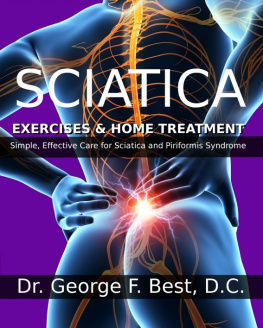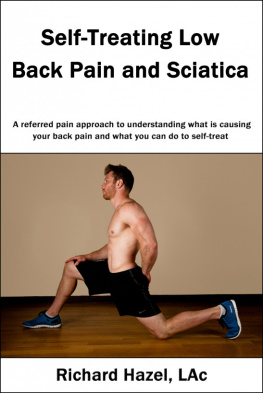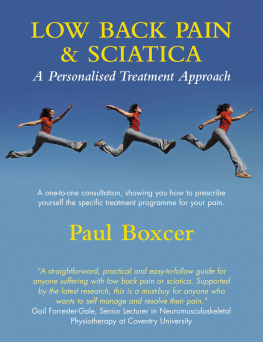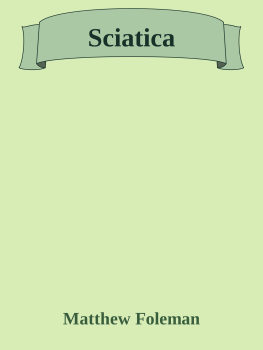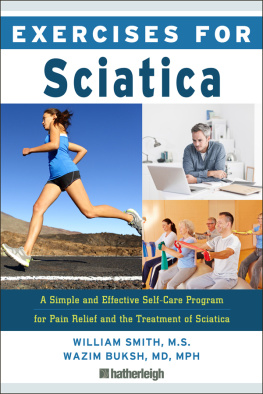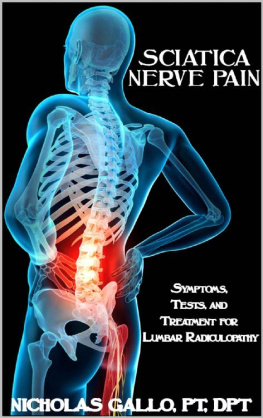Sciatica Exercises & HomeTreatment
Simple,Effective Care For Sciatica And Piriformis Syndrome
By Dr. George Best, D.C.
Published by George F. Best, D.C.at Smashwords
Copyright 2012 George F. Best,D.C.. All Rights Reserved.
Table Of Contents
Disclaimer
Every case is different and although the vastmajority of sciatica sufferers will improve using the treatmentmethods presented, this book is not a substitute for professionalevaluation and treatment. Some individuals may require different oradditional treatments to the ones presented in this book. Readersare advised to pay close attention to the warnings and precautionsthat are included in this book and are advised to seek medicalattention in the event that symptoms worsen or if new symptomsarise.
If you have questions or would like additionalinformation, please visit the author's website, .
Chapter 1: Understanding Sciatica
The term sciatica refers to symptoms arising fromthe sciatic nerve, which is the large nerve formed from severalsmaller nerves that branch off from each side of the lower spine.The sciatic nerves pass through the buttock area on each side andthen continue down the back of each leg. Below the knee, thesciatic nerve splits into two divisions that continue down the legto the ankle and foot.
Although some people call symptoms anywhere in theleg sciatica, true sciatica symptoms occur in the buttock area andmay extend down the back of the thigh and into the lower leg andfoot. Generally, the more irritated the nerve is, the further thesymptoms will extend down the leg.
While there are rare neurological disorders that cancause the development of sciatica due to direct nerve pathology, inmost cases sciatica is a symptom of some other underlying problem.The most common causes of sciatica can be broken down into two maincategories, nerve compression and muscle contraction.
Nerve compression can result from a variety ofcauses, but it is most commonly caused by a bulge or rupture of oneor more intervertebral discs in the lower lumbar spine. Theillustration below shows the basic anatomy of a section of thespine as viewed from the side:
Basic Spinal Anatomy
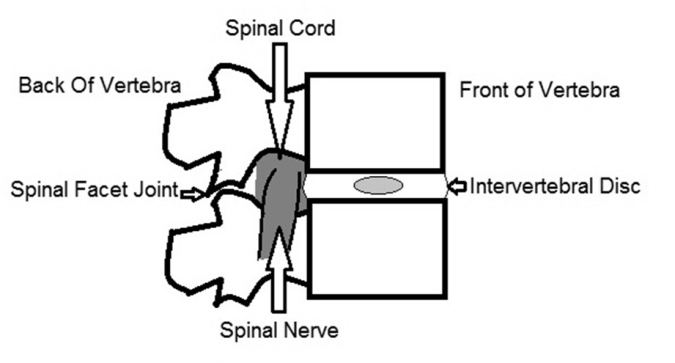
Under normal circumstances, there is plenty of spacearound the spinal nerves where they branch off from the spinal cordand exit the spine (technically, the spinal cord ends in the midlumbar spine and becomes a bundle of separate nerves called thecauda equina in the lower lumbars, but for the sake of simplicity,I'll be referring to it as the spinal cord). But the opening wherethe nerve exits the spine can become narrowed by one or morethings, resulting in compression and irritation of the nerve.
One of the most common sources of nerve compressionis a disc bulge, which is also known as a disc herniation, or discprotrusion. The discs have an outer cartilage wall and are filledwith a gel-like material that provides the spine with multipleangles of mobility and shock-absorption. The wall can becomedamaged (in ways that will be discussed later) and the innerpressure of the gel causes it to bulge outward at the point ofdamage. Because of the structure of the spine, and because of thepostures and activities that we commonly engage in, discs tend tobulge backwards towards the spinal cord and nerves. This isillustrated below:
DiscProtrusion / Bulge / Herniation
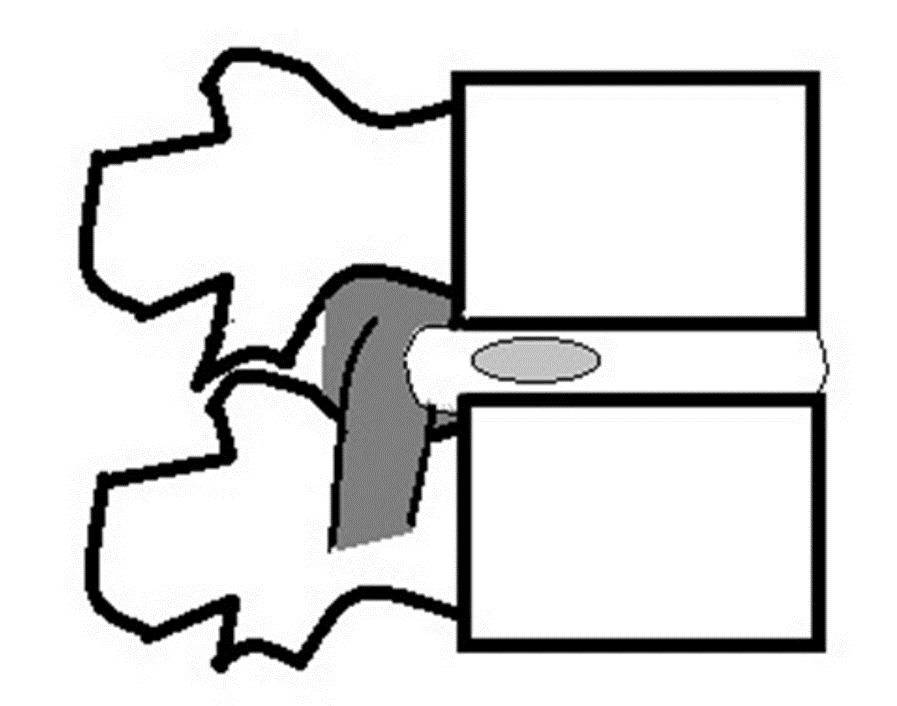
In severe cases of disc damage, the disc mayactually rupture, and the inner gel will actually come through thedisc wall. This is called a disc rupture or disc extrusion and isshown below:
Disc Extrusion /Rupture
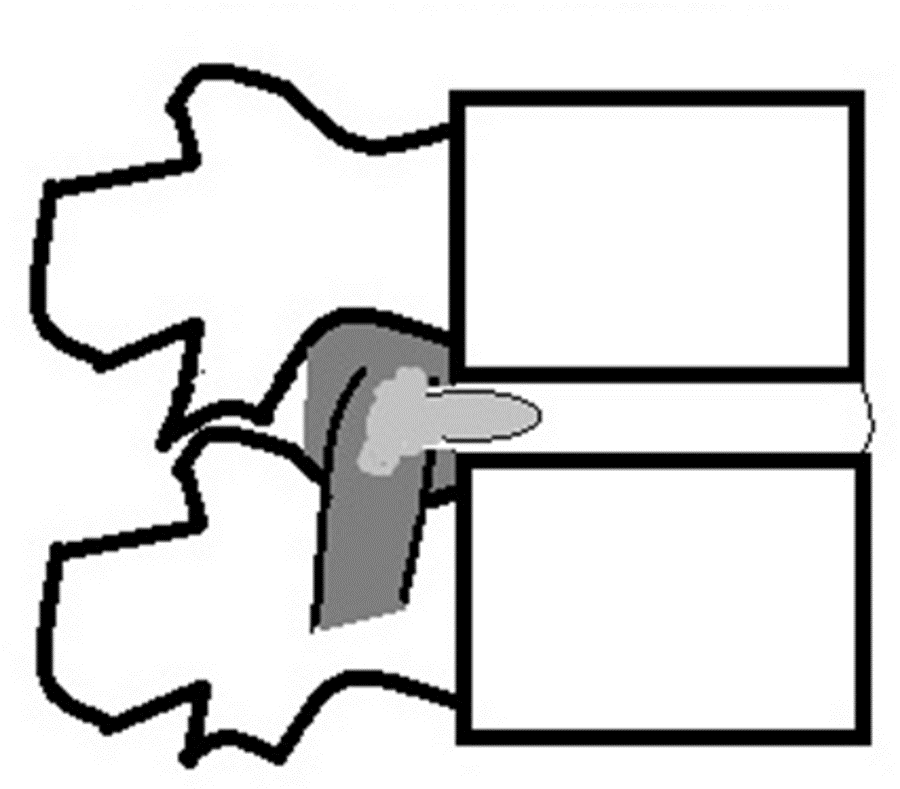
The vast majority of disc injuries are bulges orprotrusions and can usually be effectively treated with the methodsthat will be discussed later in this book. Disc ruptures(extrusions) are more serious and will often require surgery toachieve long-term relief of symptoms. By the way, the termruptured disc frequently gets used incorrectly (even by doctors)to describe what is actually a disc bulge (herniation orprotrusion), so don't assume that you will need surgery if you aretold you have a ruptured disc until you have confirmation (from anMRI or CT scan) that the disc is in fact ruptured (the termsextruded or sequestered will appear on the imaging reports inreference to one or more discs) and not simply bulging orprotruding.
In addition to disc bulges and ruptures, the spacearound the spinal nerves are commonly narrowed by changes in thespine related to degenerative arthritis. With degenerativearthritis, the discs will often lose fluid and become thinner, bonesurfaces may thicken and/or form spurs, and spinal ligaments maybuckle (from the bones becoming closer together) and/or becomethicker all of which may narrow the openings the nerves passthrough. These types of changes are illustrated below:
Degenerative Bone and Ligament Thickening
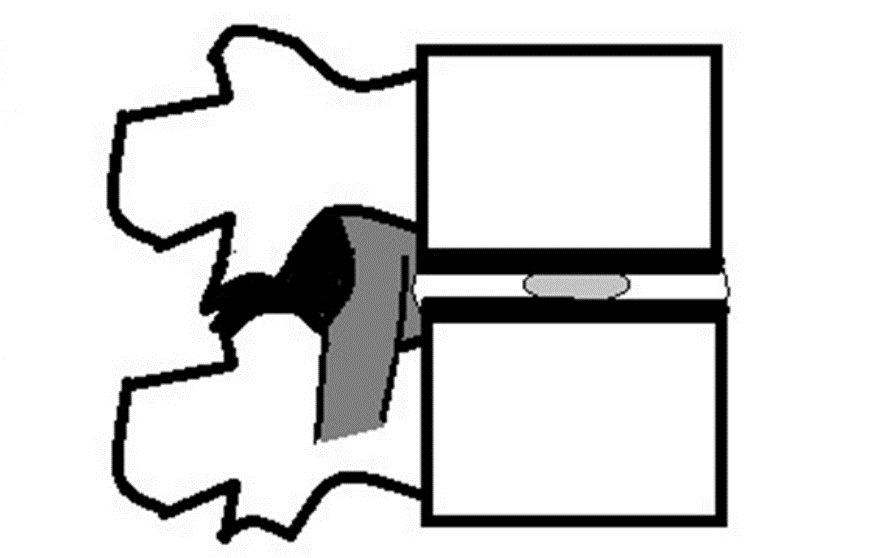
Degenerative changes in the spine most often affectthe back part of the spinal openings, while disc bulges andruptures usually narrow the front side of the spinal openings. Inmany cases, there is some degree of narrowing from both discprotrusion and degenerative changes. In addition, further nervecompression often results from swelling due to inflammation that istriggered by disc damage and/or degenerative arthritis.
While nerve compression can also result from tumorsand spinal cysts which require surgical treatment, the majority ofcases of nerve compression are due to some combination of discbulging, degenerative changes, and/or inflammatory swelling and canusually be effectively managed with the treatments discussed laterin this book.
The other major category of causes of sciaticasymptoms is muscle contraction. Several muscles can cause pain downthe leg, but only one muscle really matches the symptoms of truesciatic nerve irritation. The piriformis is a muscle located in thelower buttock area on each side that attaches from the sacrum (thetriangular bone at the base of the spine) to the upper femur, justbelow the hip joint. The right piriformis muscle is shown in thepicture that follows:
Sciatic Nerveand Piriformis Muscle
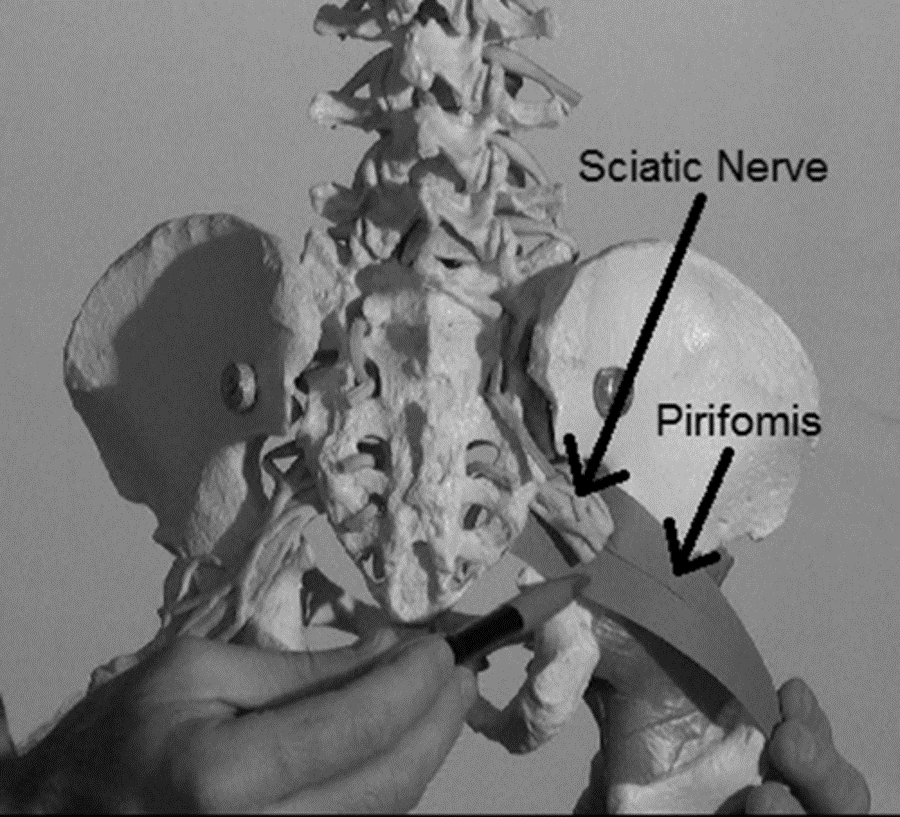
Anatomy varies somewhat from person to person, andthe sciatic nerve can pass above, below, or right through thepiriformis muscle. It is believed that in cases where the nervepasses through the piriformis, contraction or tightness of themuscle can be sufficient to cause pressure irritation on thesciatic nerve, but it also appears that the muscle itself canproduce referred pain symptoms that closely mimic the symptompattern of sciatic nerve irritation. In any event, when thepiriformis is associated with sciatic nerve symptoms, it is calledpiriformis syndrome.
Piriformis syndrome can be brought on by directtrauma to the muscle, such as from a fall on the buttocks, butoftentimes arises simply after prolonged periods of sitting. Mostcases of piriformis syndrome can be successfully treated with thetechniques that are presented later in this book, but occasionallyinjections or even surgical treatment may be needed to reducepressure on the sciatic nerve when it passes through the center ofthe muscle.

